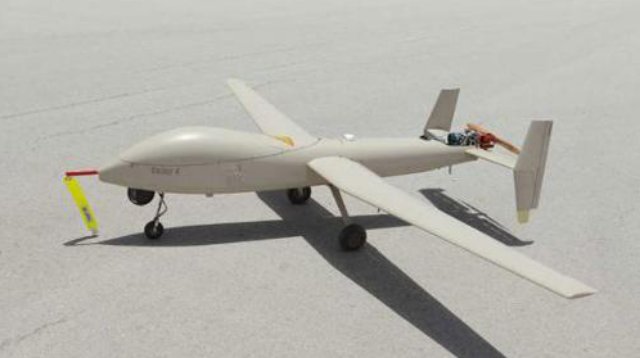The King Abdulaziz City for Science and Technology (KACST) in Saudi Arabia has disclosed that it has produced 38 UAS that are named Saker 2, Saker 3 and Saker 4.
Their characteristics are their light weight, load bearing capacity and being programmed through a ground control room, aside from not being detected by radar and reconnaissance equipment. They are to be used for research purposes.
The supervisor of the National Center for Aviation Technology in KACST Dr. Abdullah Al-Hussan said these aircraft are made of fibreglass and carbon fibres.
Al-Hussan said the plane has a computerized control device. The aircraft has logarithmic programmes that can deal with and adapt to the environmental conditions while flying — like dealing with winds, different temperatures, increasing combustion in the engine, and emergency landing or take off or deviating from the plane’s route.
The aircraft also has telecommunication devices and a ground operation room where the pictures and videos sent by the plane can be seen in the control room. The route and targets can be changed through direct communication while the aircraft is flying.
Dr. Al-Hussan said through programming the plane’s route can be specified as well as the targets required to be photographed whether topography, valleys with running streams, mountains, farms or buildings. Moving targets can also be specified and followed like the movement of cars, trains and crowds of people.
He said that this plane is programmed in advance and operates through a computerized system. It only needs an aviation engineer to monitor the devices and detectors in the plane from the ground control room.
In case of a breakdown or defect it has several choices including emergency landing using a parachute or revert to the ground control room.
Dr. Al-Hussan, while giving a description of the UAS types produced by KACST, said Saker 2 is a medium-sized plane with a range of 150 km. It can be developed to reach 250 km, fly for eight hours with a speed estimated at 120 kms per hour and at a height of 5,000 meters. Such aircraft are classified as medium to long range. The design of Saker 2 has proved its quality in stability and control through scientific and practical tests. The costs of the product has been cut through reducing the cost of research and development.
He said that Saker 2 is comparable to its counterparts as regards analytical studies and technology used in manufacturing the aircraft’s body. Carbon fibres and fibreglass have been used so as to decrease the weight of the empty aircraft during takeoff. Saker 2 has been designed to carry photography and monitoring equipment. There is the capability to control the aircraft through satellites in the future so as to cover wider areas and longer distances.
Al-Hussan, highlighting the second type of aircraft as small, said Saker 3 is a short range aircraft. The whole body of the plane is made of carbon fibre. This is among the lightest planes if not the lightest, as it weighs just 4.5 kg including the load and landing wheels. This plane can take off from different runways. It can also be hurled by hand. It hovers at a height of 1,000 meters and can fly for 50 kms. The performance of the plane can be improved and developed by replacing the engine or changing the batteries, or both.
The manufacturing and tests of Saker 4, the third type, have been completed. Its takeoff weight is 25 kg. The plane can carry a load of 5 kg. Its wing is 3.75 meters long and it has a maximum speed of 120 kms per hour at a height of 5,000 meters, Al-Hussan said.
Source: Saudi Gazette

